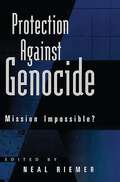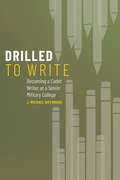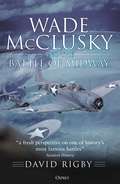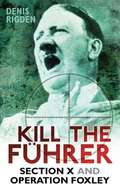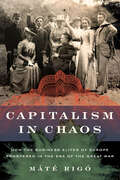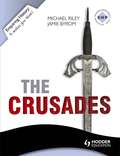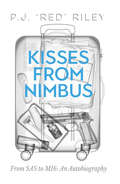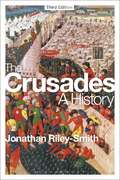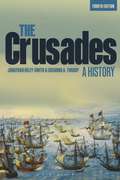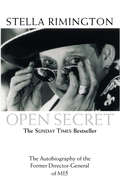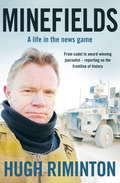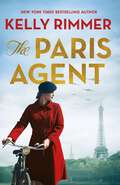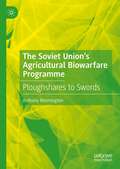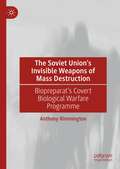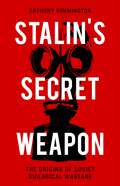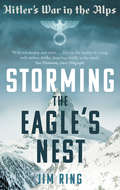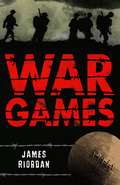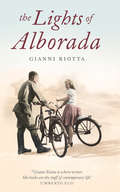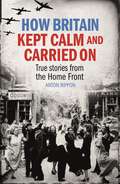- Table View
- List View
Protection Against Genocide: Mission Impossible?
by Neal RiemerWithout succumbing to utopian fantasies or realistic pessimism, Riemer and his contributors call for strengthening the key institutions of a global human rights regime, developing an effective policy of prudent prevention of genocide, working out a sagacious strategy of keenly targeted sanctions—political, economic, military, judicial—and adopting a guiding philosophy of just humanitarian intervention. They underscore significant changes in the international system—the end of the Cold War, economic globalization, the communications revolution— that hold open the opportunity for significant, if modest, movement toward strengthening key institutions.The essays explore key problems in working toward prevention of genocide. They highlight the existence of considerable early warning of genocide and emphasize that the real problem is a lack of political will in key global institutions. Sanctions, especially economic sanctions may punish a genocidal regime, but at the expense of innocent civilians. Thus, more clearly targeted sanctions are seen as essential. The argument on behalf of a standing police force to deal with the crime of genocide, as they show, is powerful and controversial: powerful because the need is persuasive, controversial because political realists question its cost and political feasibility. Implementing a philosophy of just humanitarian intervention requires an appreciation of the difficulties of interpreting those principles in difficult concrete situations. A permanent international criminal tribunal to deter and punish genocide, they argue, will put into place a much needed component of a global human rights regime. A thoughtful analysis for scholars and students of international politics and law, and human rights in general.
Drilled to Write: Becoming a Cadet Writer at a Senior Military College
by J. Michael RifenburgDrilled to Write offers a rich account of US Army cadets navigating the unique demands of Army writing at a senior military college. In this longitudinal case study, J. Michael Rifenburg follows one cadet, Logan Blackwell, for four years and traces how he conceptualizes Army writing and Army genres through immersion in military science classes, tactical exercises in the Appalachian Mountains, and specialized programs like Airborne School. Drawing from research on rhetorical genre studies, writing transfer, and materiality, Drilled to Write speaks to scholars in writing studies committed to capturing how students understand their own writing development. Collectively, these chapters articulate four ways Blackwell leveraged resources through ROTC to become a cadet writer at this military college. Each chapter is dedicated to one year of his undergraduate experience with focus on curricular writing for his business management major and military science classes as well as his extracurricular writing, like his Ballroom Dance Club bylaws and a three-thousand-word short story. In Drilled to Write, Rifenburg invites readers to see how cadets are positioned between civilian and military life—a curiously liminal space where they develop as writers. Using Army ROTC as an entry into genre theory and larger conversations about the role higher education plays in developing Army officers, he shows how writing students develop genre awareness and flexibility while forging a personal identity.
Wade McClusky and the Battle of Midway
by David RigbyDuring the Battle of Midway in June 1942, US Navy dive bomber pilot Wade McClusky proved himself to be one of the greatest pilots and combat leaders in American history, but his story has never been told – until now. It was Wade McClusky who remained calm when the Japanese fleet was not where it was expected to be. It was he who made the counterintuitive choice to then search to the north instead of to the south. It was also McClusky who took the calculated risk of continuing to search even though his bombers were low on fuel and may not have enough to make it back to the Enterprise. His ability to remain calm under enormous pressure played a huge role in the US Navy winning this decisive victory that turned the tide of war in the Pacific. This book is the story of exactly the right man being in exactly the right place at exactly the right time. Wade McClusky was that man and this is his story.
Wade McClusky and the Battle of Midway
by David RigbyDuring the Battle of Midway in June 1942, US Navy dive bomber pilot Wade McClusky proved himself to be one of the greatest pilots and combat leaders in American history, but his story has never been told – until now. It was Wade McClusky who remained calm when the Japanese fleet was not where it was expected to be. It was he who made the counterintuitive choice to then search to the north instead of to the south. It was also McClusky who took the calculated risk of continuing to search even though his bombers were low on fuel and may not have enough to make it back to the Enterprise. His ability to remain calm under enormous pressure played a huge role in the US Navy winning this decisive victory that turned the tide of war in the Pacific. This book is the story of exactly the right man being in exactly the right place at exactly the right time. Wade McClusky was that man and this is his story.
Kill the Fuhrer: Section X and Operation Foxley
by Denis RigdenDuring the Second World War, Britain's top secret Special Operations Executive plotted to assassinate Hitler. A small department of SOE known as Section X had the tantalisingly complext task of investigating how, when and where their plan could be executed. The section also plotted the killing of Goebbels, Himmler and other selected members of Hitler's inner circle. Only Section X and a handful of other SOE staff had any knowledge of these projects, codenamed Operatino Foxley and Operation Little Foxleys. As history has shown, these schemes turned out to be pipe dreams. Even so, Section X, renamed the German Directorate in 1944, made a huge contribution to the Allied war effort through their organised sabotage and clandestine distribution of black propaganda. Denis Rigden describes Section X's efforts to discover as much as possible about the intended assassination targets, and questions whether a successful Operation Foxley would have helped or hindered the Allied cause. Based on top secret documents and private sources and illustrated with archive photographs, 'Kill the Fuhrer' is an intriguing insight into the shadowy world of Britain's wartime secret services.
Capitalism in Chaos: How the Business Elites of Europe Prospered in the Era of the Great War
by Máté RigóCapitalism in Chaos explores an often-overlooked consequence and paradox of the First World War—the prosperity of business elites and bankers in service of the war effort during the destruction of capital and wealth by belligerent armies. This study of business life amid war and massive geopolitical changes follows industrialists and policymakers in Central Europe as the region became crucially important for German and subsequently French plans of economic and geopolitical expansion in the late nineteenth and early twentieth centuries. Based on extensive research in sixteen archives, five languages, and four states, Máté Rigó demonstrates that wartime destruction and the birth of "war millionaires" were two sides of the same coin. Despite the recent centenaries of the Great War and the Versailles peace treaties, knowledge of the overall impact of war and border changes on business life remains sporadic, based on scant statistics and misleading national foci. Consequently, most histories remain wedded to the viewpoint of national governments and commercial connections across national borders.Capitalism in Chaos changes the static historical perspective by presenting Europe's East as the economic engine of the continent. Rigó accomplishes this paradigm shift by focusing on both supranational regions—including East-Central and Western Europe—as well as the eastern and western peripheries of Central Europe, Alsace-Lorraine and Transylvania, from the 1870s until the 1920s. As a result, Capitalism in Chaos offers a concrete, lively history of economics during major world crises, with a contemporary consciousness toward inequality and disparity during a time of collapse.
Enquiring History: Conflict and Controversy, 1095-1291 (PDF)
by Michael Riley Jamie ByromThere has never been a more important time to study the Crusades. Religious conflict is a fact of life in the twenty-first century no less than it was in the medieval world. And yet the world of the Crusades is so different from ours that it takes a massive leap of imagination to make sense of these events. This book takes on that challenge: opening a window onto the 12th and 13th century worlds to understand what on earth was going on. It examines the Crusades themselves; the controversies surrounding them; and the past and current re-interpretations of the period.
Kisses From Nimbus: From SAS to MI6 An Autobiography
by P. J. RileyShot at, bombed, imprisoned and arrested for murder. His is the story the establishment doesn’t want you to read.br>Captain P. J. “Red” Riley is an ex-SAS soldier who served for eighteen years as an MI6 agent. Riley escaped internment in Chile during the Falklands war during an audacious top-secret attempt to attack the Argentinian mainland. He was imprisoned in the darkness of the Sierra Leonean jungle, and withstood heavy fire in war-torn Beirut and Syria. In 2015, he was arrested for murder but all charges were later dropped. In this searing memoir, Riley reveals the brutal realities of his service, and the truth behind the newspaper headlines featuring some of the most significant events in recent British history. His account provides startling new evidence on the Iraq war, what Tony Blair really knew about Saddam Hussain’s weapons of mass destruction before the allied invasion, and questions the British government’s alleged involvement in the death of Princess Diana. Chaotic, darkly humorous and at times heart-wrenchingly sad, Kisses From Nimbus charts the harrowing real-life experiences of a soldier and spy in the name of Queen and country.
The Crusades: A History
by Jonathan Riley-SmithThe Crusades: A History is the definitive account of a key topic in medieval and religious history. Jonathan Riley-Smith, a world authority on the subject, explores the organisation of a crusade, the experience of crusading and the crusaders themselves, producing a textbook that is as accessible as it is comprehensive.This exciting new third edition includes:- Substantial new material on crusade theory, historiography and translated texts- An expanded scope that extends the text to cover the decline of crusading in the nineteenth century- Valuable pedagogical features, such as a revised bibliography, maps, illustrations and a brand new chronologyThis book is essential reading for all students and scholars seeking to understand the Crusades and their significance in world history.
The Crusades: A History
by Jonathan Riley-SmithThe Crusades: A History is the definitive account of a key topic in medieval and religious history. Jonathan Riley-Smith, a world authority on the subject, explores the organisation of a crusade, the experience of crusading and the crusaders themselves, producing a textbook that is as accessible as it is comprehensive.This exciting new third edition includes:- Substantial new material on crusade theory, historiography and translated texts- An expanded scope that extends the text to cover the decline of crusading in the nineteenth century- Valuable pedagogical features, such as a revised bibliography, maps, illustrations and a brand new chronologyThis book is essential reading for all students and scholars seeking to understand the Crusades and their significance in world history.
The Crusades: A History
by Jonathan Riley-Smith Susanna A. ThroopThis fully updated and expanded edition of The Crusades: A History provides an authoritative exploration of one of the most significant topics in medieval and religious history. From the First Crusade right up to the present day, Jonathan Riley-Smith and Susanna Throop investigate the phenomenon of crusading and the crusaders themselves. Now in its 4th edition, this landmark text includes: - A new and more balanced book structure with updated terminology designed to help instructors and students alike - Deliberate incorporation of a wider range of historical perspectives, including Byzantine and Islamic historiographies, crusading against Christians and within Europe, women and gender, and the crusades in the context of Afro-Eurasian history - A dramatically expanded discussion of crusading from the 16th through to the 21st century- A fully up-to-date bibliographic essay - Additional textboxes, maps, and images The Crusades: A History is the definitive text on the subject for students and scholars alike.
The Crusades: A History
by Jonathan Riley-Smith Susanna A. ThroopThis fully updated and expanded edition of The Crusades: A History provides an authoritative exploration of one of the most significant topics in medieval and religious history. From the First Crusade right up to the present day, Jonathan Riley-Smith and Susanna Throop investigate the phenomenon of crusading and the crusaders themselves. Now in its 4th edition, this landmark text includes: - A new and more balanced book structure with updated terminology designed to help instructors and students alike - Deliberate incorporation of a wider range of historical perspectives, including Byzantine and Islamic historiographies, crusading against Christians and within Europe, women and gender, and the crusades in the context of Afro-Eurasian history - A dramatically expanded discussion of crusading from the 16th through to the 21st century- A fully up-to-date bibliographic essay - Additional textboxes, maps, and images The Crusades: A History is the definitive text on the subject for students and scholars alike.
Open Secret: The Autobiography of the Former Director-General of MI5
by Stella RimingtonRimington's account of her rise in what was very definitely a man's world..Stella Rimington was educated at Nottingham Girls' High School, and Edinburgh and Liverpool Universities. In 1959 she started work in the Worcestershire County Archives, moving in 1962 to the India Office Library in London, as Assistant Keeper responsible for manuscripts relating to the period of the British rule in India. In 1965 she joined the Security Service (MI5) part-time, while she was in India accompanying her husband on a posting to the British High Commission in New Delhi. On her return to the UK she joined MI5 as a full-time employee. During her career in MI5, which lasted from 1969 to 1996, Stella Rimington worked in all the main fields of the Service's responsibilities - counter-subversion, counter-espionage and counter-terrorism - and became successively Director of all three branches. She was appointed Director-General of MI5 in 1992. She was the first woman to hold the post and the first Director-General whose name was publicly announced on appointment. During her time as DG she pursued a policy of greater openness for MI5, giving the 1994 Dimbleby Lecture on BBC TV and several other public lectures and publishing a booklet about the Service. She was made a Dame Commander of the Bath (DCB) in 1995 and has been awarded the Honorary Degree of Doctor of Laws by the Universities of Nottingham and Exeter. Following her retirement from MI5 in 1996, she has become a Non-Executive Director of Marks & Spencer, BG Group plc and Whitehead Mann GKR. She is Chairman of the Institute of Cancer Research and a member of the Board of the Royal Marsden NHS Trust. She has two daughters and a granddaughter.
Minefields: A life in the news game - the bestselling memoir of Australia's legendary foreign correspondent
by Hugh RimintonMinefields is a compelling exploration of a foreign correspondent's life - proof of Hugh's belief that 'if you go looking for trouble, you'll probably find it'.Over nearly forty years as a journalist and foreign correspondent, Hugh Riminton has been shot at, blown up, threatened with deportation and thrown in jail. He has reported from nearly fifty countries, witnessed massacres in Africa, wars and conflicts on four continents, and every kind of natural disaster.It has been an extraordinary life. From a small-town teenager with a drinking problem, cleaning rat cages for a living, to a multi-award-winning international journalist reporting to an audience of 300 million people, Hugh has been a frontline witness to our times. From genocide in Africa to the Indian Ocean tsunami, from wars in Iraq and Afghanistan to slave-buying in Sudan, Hugh has seen the best and worst of human behaviour. In Australia, he has covered political dramas, witnessed the Port Arthur massacre and the Thredbo disaster and broken a major national scandal. His work helped force half a dozen government inquiries. His story is entertaining, deeply personal and quietly wise.'An impressive career. His story is a triumph of substance over style.' Sydney Morning Herald'Hugh is an icon of Australian journalism' Michael Ware, former Iraq correspondent for TIME and CNN
The Paris Agent: Inspired by true events, an emotionally compelling story of courageous women in World War Two
by Kelly RimmerFrom the bestselling author of The Warsaw Orphan, this emotionally compelling novel is inspired by real-life female WWII agents including Violette Szabo and Diana Rowden, whose incredible stories have never before been brought to readers.Twenty-five years after the end of the year, ageing British SOE operative Noah Ainsworth is reflecting on the secret agent who saved his life when a mission went wrong during his perilous, exhilarating years in occupied France. He never knew her real name, nor whether she survived war. His daughter Charlotte begins a search for answers. What follows is the story of Fleur and Chloe, two otherwise ordinary women who in 1943 are called up by the SOE for deployment in Frances. Taking enormous risks with very little information or resources, the women have no idea they're at the mercy of a double agent within their ranks who's causing chaos.As Charlotte's search for answers continues, new suspicions are raised about the identity of the double agent, with unsettling clues pointing to her father........................................Praise for Kelly Rimmer:'The German Wife is a heart-wrenching, uplifting story about love and family and the choices we make in impossible situations' CHRISTINE WELLS'Once again, Kelly Rimmer has turned my emotions upside down' SALLY HEPWORTH'A fast-paced, emotional and utterly riveting tale of love, loss and the choices we make to protect our families - a must-read' KRISTIN HARMEL'Kelly Rimmer's heart-stopping rendering of the war in Nazi-occupied Poland-of life, resistance, survival, and love-will captivate readers' LISA WINGATE
The Soviet Union’s Agricultural Biowarfare Programme: Ploughshares to Swords
by Anthony RimmingtonThis book focuses upon the secret agricultural biological warfare programme codenamed Ekologiya – which was pursued by the Soviet Union from 1958 through to the collapse of the USSR in 1991. It was the largest offensive agricultural biowarfare project the world has ever seen and Soviet anti-crop and anti-livestock weapons had the capability to inflict enormous damage on Western agriculture. Beginning in the early 1970s, there was a new focus within the Soviet agricultural biowarfare programme on molecular biology and the development of genetically modified agents. A key characteristic of the Ekologiya project was the creation of mobilization production facilities. These ostensibly civil manufacturing plants incorporated capacity for production of biowarfare agents in wartime emergency. During the 1990s-2000s, the counter-proliferation efforts undertaken by the US and UK played a major role in preventing the transfer of Ekologiya scientists, technologies and pathogens to Iran and other countries of potential proliferation concern.Anthony Rimmington is a former Senior Research Fellow at Birmingham University’s Centre for Russian, European and Eurasian Studies, UK. He has published widely on the civil life sciences sector in the post-Soviet states and on the Soviet Union’s offensive biological warfare programme, including Stalin’s Secret Weapon: The Origins of Soviet Biological Warfare.
The Soviet Union’s Invisible Weapons of Mass Destruction: Biopreparat's Covert Biological Warfare Programme
by Anthony RimmingtonThis book focuses on Biopreparat, the Soviet agency created in 1974, which spearheaded the largest and most sophisticated biological warfare programme the world has ever seen. At its height, Biopreparat employed more than 30,000 personnel and incorporated an enormous network embracing military-focused research institutes, design centres, biowarfare pilot facilities and dual-use production plants. The secret network pursued major offensive R&D programmes, which sought to use genetic engineering techniques to create microbial strains resistant to antibiotics and with wholly new and unexpected pathogenic properties. During the mid-1980s, Biopreparat increased in size and political importance and also emerged as a major civil biopharmaceutical player in the USSR. In the wake of the collapse of the Soviet Union in 1991, an acute struggle for control of Biopreparat’s most valuable assets took place and the network was eventually broken-up and control of its facilities transferred to a myriad of state agencies and private companies.
Stalin's Secret Weapon: The Origins of Soviet Biological Warfare
by Anthony RimmingtonStalin's Secret Weapon is a gripping account of the early history of the globally significant Soviet biological weapons program, including its key scientists, its secret experimental bases and the role of intelligence specialists, establishing beyond doubt that the infrastructure created by Stalin continues to form the core of Russia's current biological defense network. Anthony Rimmington has enjoyed privileged access to an array of newly available sources and materials, including declassified British Secret Intelligence Service reports. The evidence contained therein has led him to conclude that the program, with its network of dedicated facilities and proving grounds, was far more extensive than previously considered, easily outstripping those of the major Western powers. As Rimmington reveals, many of the USSR's leading infectious disease scientists, including those focused on pneumonic plague, were recruited by the Soviet military and intelligence services. At the dark heart of this bacteriological archipelago lay Stalin, and his involvement is everywhere to be seen, from the promotion of favored researchers to the political repression and execution of the lead biological warfare specialist, Ivan Mikhailovich Velikanov.
Stalin's Secret Weapon: The Origins of Soviet Biological Warfare
by Anthony RimmingtonStalin's Secret Weapon is a gripping account of the early history of the globally significant Soviet biological weapons program, including its key scientists, its secret experimental bases and the role of intelligence specialists, establishing beyond doubt that the infrastructure created by Stalin continues to form the core of Russia's current biological defense network. Anthony Rimmington has enjoyed privileged access to an array of newly available sources and materials, including declassified British Secret Intelligence Service reports. The evidence contained therein has led him to conclude that the program, with its network of dedicated facilities and proving grounds, was far more extensive than previously considered, easily outstripping those of the major Western powers. As Rimmington reveals, many of the USSR's leading infectious disease scientists, including those focused on pneumonic plague, were recruited by the Soviet military and intelligence services. At the dark heart of this bacteriological archipelago lay Stalin, and his involvement is everywhere to be seen, from the promotion of favored researchers to the political repression and execution of the lead biological warfare specialist, Ivan Mikhailovich Velikanov.
Storming the Eagle's Nest: Hitler's War in the Alps
by Jim RingFrom the Fall of France in June 1940 to Hitler's suicide in April 1945, the swastika flew from the peaks of the High Savoy in the western Alps to the passes above Ljubljana in the east. The Alps as much as Berlin were the heart of the Third Reich.'Yes,' Hitler declared of his headquarters in the Bavarian Alps, 'I have a close link to this mountain. Much was done there, came about and ended there; those were the best times of my life . . . My great plans were forged there.'With great authority and verve, Jim Ring tells the story of how the war was conceived and directed from the Fuhrer's mountain retreat, how all the Alps bar Switzerland fell to Fascism, and how Switzerland herself became the Nazi's banker and Europe's spy centre. How the Alps in France, Italy and Yugoslavia became cradles of resistance, how the range proved both a sanctuary and a death-trap for Europe's Jews - and how the whole war culminated in the Allies' descent on what was rumoured to be Hitler's Alpine Redoubt, a Bavarian mountain fortress.
War Games (White Wolves: Stories with Historical Settings)
by James RiordanIt's Christmas Eve, 1914, and there's a war on. British and Germansoldiers sit in the muddy trenches either side of No Man's Land, asdeadly enemies. Suddenly, a strange sound fills the air. A German voiceis singing 'Silent Night'. A British sergeant joins in, and so begins amost unusual evening indeed...War Games is a historical story set during World War I.
War Games (White Wolves: Stories with Historical Settings)
by James RiordanIt's Christmas Eve, 1914, and there's a war on. British and Germansoldiers sit in the muddy trenches either side of No Man's Land, asdeadly enemies. Suddenly, a strange sound fills the air. A German voiceis singing 'Silent Night'. A British sergeant joins in, and so begins amost unusual evening indeed...War Games is a historical story set during World War I.
The Lights of Alborada
by Gianni RiottaA rousing historical adventure from the bestselling author of ‘Prince of the Clouds’.
How Britain Kept Calm and Carried On: True stories from the Home Front
by Anton RipponThe British are well known for their unique sense of humour - for the ability to see the funny side even in the most dire situation - and it was that humour that helped the nation through the dark days of the Second World War. In this heartwarming, often amusing and sometimes heartbreakingly sad book, Anton Rippon has gathered together stories from people all over the country that reveal the strange, incredible and downright funny things that happened to them between 1939 and 1945. From the Blitz to the Home Guard, blackouts to unexploded bombs, service life at home and abroad, there are stories here from all walks of life and from men, women and children of the time. Their first-person stories stand testament to that indomitable spirit that 'kept us calm and carrying on' through those darkest days.
